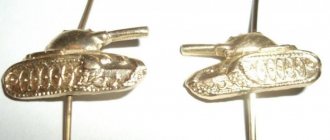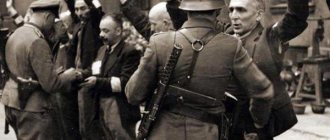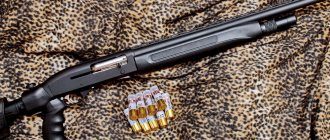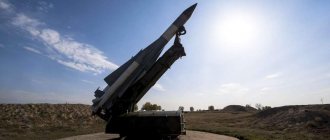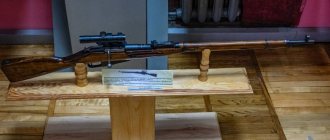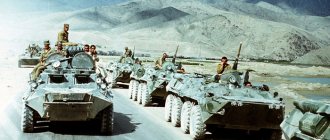How many people are in a squad in the army?
Initially, the personnel of the detachments was not the same in different brigades and amounted to 300-350 people. Units
were a battalion consisting of a battalion headquarters, separate platoons at the headquarters and 3 special purpose companies.
Interesting materials:
Why do cats love to chew on boxes? Why do cats love cardboard? Why do cats love to be scratched under their chins? Why do cats love boxes? Why do cats love to lie on bags? Why do cats love bags? Why do cats like to hide? Why do cats like to sit on paper? Why do cats like to sit in boxes and bags? Why do cats like to sit in bags?
Rifle platoon of the Red Army
The Red Army rifle platoon consisted of a headquarters (four people) and four sections of nine people each - a total of 40 people. Previously, the squad consisted of 11 people, and the platoon size reached 48 people. The platoon had two “light” squads “type. A" with a light machine gun and two "heavy" "type. B" with two light machine guns in each." The number of squads was the same, only the number of shooters differed.
The Red Army rifle platoon, drained of blood in battle, was reduced to three or two squads; the remaining machine guns were more or less evenly distributed between them. The squad commander was armed with a Mosin rifle or a 7.62-mm self-loading SVT-40 Tokarev, but since 1943, a submachine gun became the commander’s usual weapon. The second number of the machine gun crew was also armed with a submachine gun. Each squad had two or three submachine guns.
PTR calculation August 1943
Rifle squad and platoon offensive training was first conducted in open areas where the soldiers could easily see what was happening. Then the actions were practiced in meadows with tall grass, overgrown with bushes and, finally, in the forest.
Platoons moved and attacked according to the same principles as squads. When formed in a chain, the battle formation stretched along the front for 100 m, with all four squads moving in one chain. For the platoon, a complicated diamond formation was envisaged, when one squad moved forward, followed by two others in pairs, the formation was closed by the fourth, with which the platoon commander moved. This formation provided greater tactical flexibility, allowing the enemy to enter the flank or react to such an enemy attempt.
Stalingrad fighting in a destroyed house for floors
Unlike the Wehrmacht, the Red Army did not provide for the possibility of part of the platoon's squads covering the actions of the remaining squads. The platoon always acted as a single unit; only one platoon supported another. Platoons and squads could advance by walking, running, short dashes from cover to cover, or crawling, depending on the density of enemy fire and the availability of cover. The method of conducting the attack was determined by the commander at the time the order was given. The commander and gunner-observer checked that the soldiers were approximately in the same line, but no one demanded a perfect line. If the enemy fired heavily and there were shelters, the squad would infiltrate to the enemy position.
Ritual of presenting a sniper rifle
When approaching the enemy closely, the soldiers checked that their weapons were fully loaded and prepared grenades. At the command “Assault, march!”, the arrows rushed forward. At a distance of 40-50 m you were supposed to shout “Hurray!” During the throw, one should fire, and when approaching the enemy trench line, throw grenades. Next, close combat began with point-blank shooting, bayonet thrusts, and the use of sapper blades and fists.
Experienced soldiers, early 1944, canvas bandoliers, mittens on neck straps
Having captured the target of the attack, the infantry cleared the area. Communication passages, ravines and other directions leading to the occupied position were checked. Whenever possible, success was achieved by attacking the enemy's flank and rear. Then the infantry consolidated in the achieved positions and prepared to repel the enemy counterattack. The positions were carefully camouflaged. It was believed that peasants by nature know how to blend well with nature, while city dwellers have a more difficult time.
Nutrition in the field on the front line
In defense, a Red Army rifle platoon dug single-man rifle cells, which were connected by a trench at the first opportunity. The key point of defense was the position of the machine gun crew, the successful choice of which largely depended on the success of the defense. When defending populated areas, if time permitted, communication passages were dug between houses. In winter, as well as during rains, houses served not only as fortifications, but also as housing.
A rifle platoon was part of a company, which in turn was subordinate to a rifle regiment.
Rifle divisions
Rifle divisions
Throughout the war, the rifle division
[323] was the largest and most widespread
infantry formation
[324] of the Red Army, with a fixed organizational structure. The division served as the main tactical element of rifle corps and field (combined arms) armies, although sometimes divisions operated while directly subordinate to the front. When the war began, rifle divisions consisted of three rifle regiments, two artillery regiments and a large number of auxiliary units, with a strength of 14,000 soldiers with 16 light tanks (see table 6.2).
However, as with the rest of the Red Army's military structure, these divisions proved too unwieldy for their inexperienced command staff to effectively control in battle, and their logistical support was inadequate to meet the requirements of modern mobile warfare. As a result, by the end of the summer and fall of 1941, the People's Commissariat of Defense (NKD) reduced the organizational structure of its rifle divisions and began to form instead smaller rifle brigades - in reality, extremely lightweight divisions. Although their small numbers made these formations ideal for training Red Army commanders to command troops at the division level and below, these weak rifle divisions did not have sufficient firepower or mobility to conduct mobile defensive or high-intensity offensive operations. As a result, they often suffered catastrophic losses from the more experienced and powerful Wehrmacht.
Therefore, in the spring of 1942, the NKO stopped forming rifle brigades and began to transform them into full-blooded divisions, gradually increasing their firepower and logistics by adding new weapons and support structures to the organizational structure of such a division.
As a result, by February 1943, rifle divisions consisted of three rifle regiments, an artillery regiment, a training battalion, and a number of smaller support units, including anti-tank and engineer battalions. Each regiment, in turn, consisted of three rifle battalions, one four-gun battery of 76 mm field guns, a six-gun 45 mm anti-tank battery, a mortar battery with six 120 mm mortars and a company of machine gunners. The rifle battalions, in turn, consisted of three rifle companies, a machine gun company, a mortar company with nine 82 mm mortars and an anti-tank gun platoon of two 45 mm guns. Divisional artillery consisted of twelve 76 mm and twelve 122 mm guns, divided into three divisions.
The division organized in this way numbered 9,435 soldiers, armed with 12 122 mm caliber guns, 32 76 mm caliber guns, 106 122 and 82 (and sometimes 50) mm caliber mortars, 48 37 mm or 45 mm anti-tank guns, 212 anti-tank rifles, 6,484 rifles and carbines, 727 machine guns, 494 light machine guns and 111 heavy (easel) machine guns, 123 vehicles and 1,700 horses.[325] During the first half of 1943, the NKO slightly reduced the number of rifle divisions, but increased its firepower, increasing the number of machine guns by 50 percent. Overall, the number of rifle divisions in the Red Army increased from 198 on June 22, 1941 to 489 on December 31, 1943.
To distinguish rifle divisions that performed well in battle, in the summer of 1941 the NKO awarded three of them the rank of guards. In continuation of this practice, until December 31, a total of 10 rifle divisions (from the 1st to the 10th) received guard ranks: the former 100th, 127th, 153rd, 161st, 107th, 120th I, 64th, 316th, 78th and 52nd, respectively. These new guards divisions had a staff of 10,670 soldiers, and in December 1942 a 36-gun artillery regiment was added to them. Thus, they were somewhat stronger than conventional Soviet rifle divisions. However, regardless of their ranks and designations, most of the Red Army rifle divisions throughout the war had significantly smaller numbers (sometimes as few as 1,500 fighters) and much weaker artillery support. The number of guards rifle divisions in the Red Army continued to grow: on February 1, 1943 there were 99, on July 1 - 96, on December 31 - 97.
When the war began, the Red Army had only three motorized rifle divisions. One of them, the famous 1st Moscow Motorized Rifle Division, was part of the Moscow-based 7th Mechanized Corps, and the other two were in the Far East. After the 1st Moscow Motorized Rifle Division was destroyed in the battles of Orsha and Smolensk in early July 1941, the NKO reorganized it, turning it into the 1st Tank Division in August 1941, and into the 1st Motorized Rifle Division in September, and soon it became the 1st Guards Motorized Rifle Division, which it remained until mid-1943.
Although the 82nd Motorized Rifle Division, assigned to the Trans-Baikal Military District at the beginning of the war, was called a motorized rifle division, it had the structure of a regular motorized division. After it was transferred west to Moscow in October 1941, the NKO reorganized the division into a regular rifle division. Finally, at the end of September 1941, the 10th Tank Division was reorganized into the 107th Motorized Rifle Division; in mid-1942 it became a regular rifle division. Two other motorized rifle divisions present in the Red Army in June 1941, the 36th and 57th, were remnants of the older mechanized corps of the 1940 formation. Until the end of the war, both of them remained in the Far East.
Thus, by the beginning of 1943, the Red Army had three motorized rifle divisions: the 1st Guards Moscow and two motorized rifle divisions in the Far Eastern theater.
In June 1941, the Red Army also had specialized mountain rifle divisions, the structure of which was somewhat simpler than that of standard rifle divisions. They were equipped for combat operations in mountainous areas. Nineteen such divisions were stationed on the Southern Front, in the North Caucasus, Transcaucasus, Central Asian and Far Eastern military districts and under the separate 9th Army[326] in the Crimea. Each such division consisted of four mountain rifle regiments, two mountain artillery regiments, an anti-tank battery, an engineer battalion and a logistics service. Instead of the usual weapons of a rifle division, the mountain divisions had twenty-five 122 mm mountain pack howitzers, sixteen 76 mm mountain guns, eight 45 mm anti-tank guns and eight 37 mm anti-aircraft guns, as well as twelve 107 mm mountain mortars, sixteen 82 -mm and sixty 50mm mortars.[327] Although mountain divisions were as strong as standard rifle divisions in manpower, they were much more fragile than their line counterparts.
After the advancing Wehrmacht destroyed most of these mountain divisions during Operation Barbarossa, the NKO either disbanded the remaining ones or converted them into regular rifle divisions, leaving only a few such divisions in the mountainous regions of the Caucasus.
In addition, the Red Army also had a small number of mountain rifle brigades, regiments and individual detachments. Overall, the number of mountain rifle divisions was reduced from 19 on June 22, 1941 to 4 on December 31, 1943.

